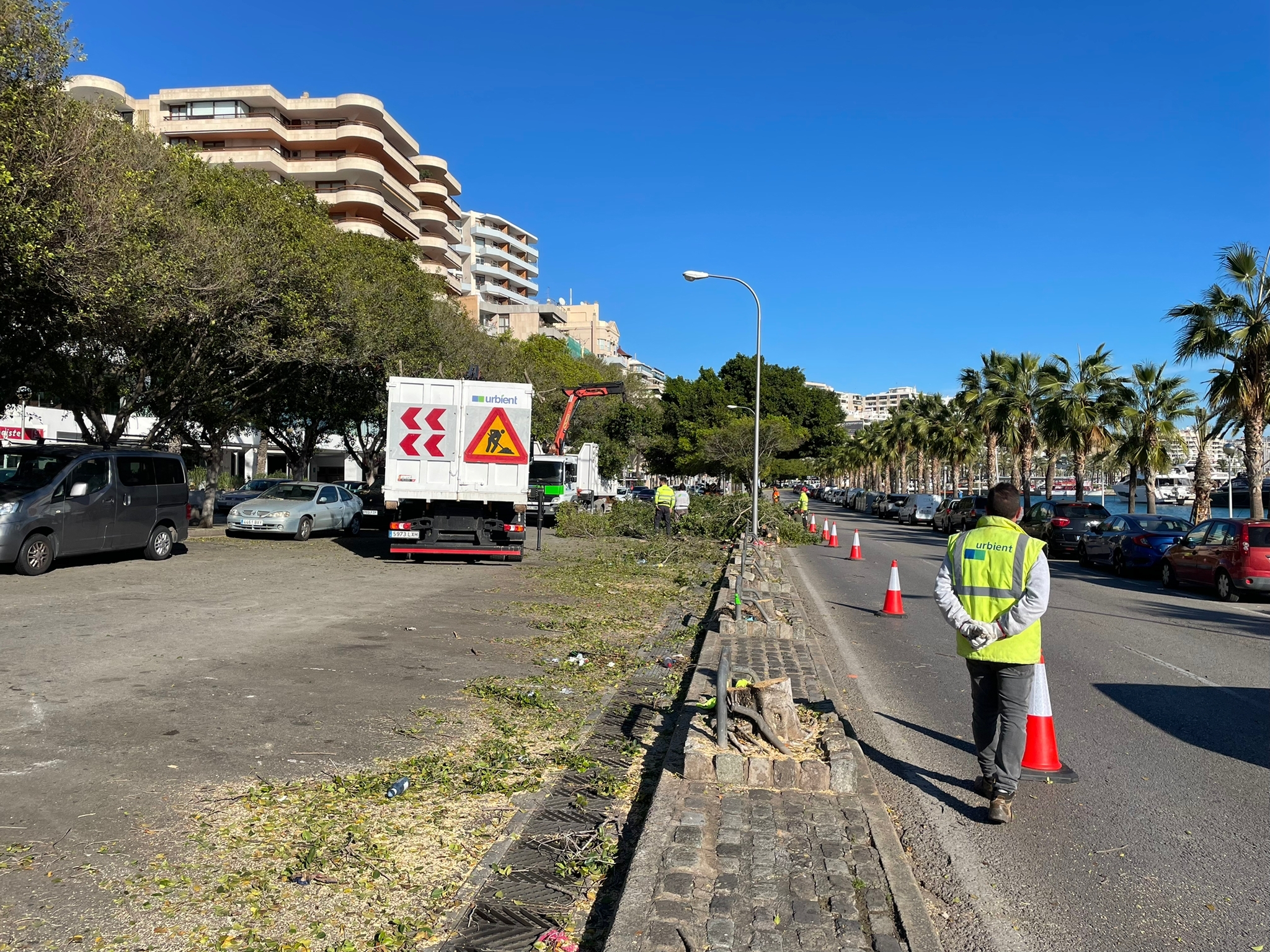

Port-city
Transport and infrastructure
Socio-economic development


The signposting and preparation for the scheduled pruning and felling of some trees on Palma’s Maritime Promenade has begun this morning. This first clearing phase will last until 30 December and mainly affects the median line in front of the Balearic Oceanographic Centre. Subsequently, from 2 to 5 January 2023, a new phase will be started that involves reserving space for further felling in the area in front of the Gran Melià Victoria. More trees, palm trees and gardens As the proposal presented by the Martínez Lapeña-Torres Arquitectes architectural study explains, around 70 of the felled trees are expected to be replanted. As a result, the promenade will have three times as many trees and twice as many palm trees and flowerbeds (increasing from 9.7 to 20% in an area of 36,487 square metres). This will result in a total of 1,820 new trees, including 512 palm trees, 69 replanted specimens and 20 new species.
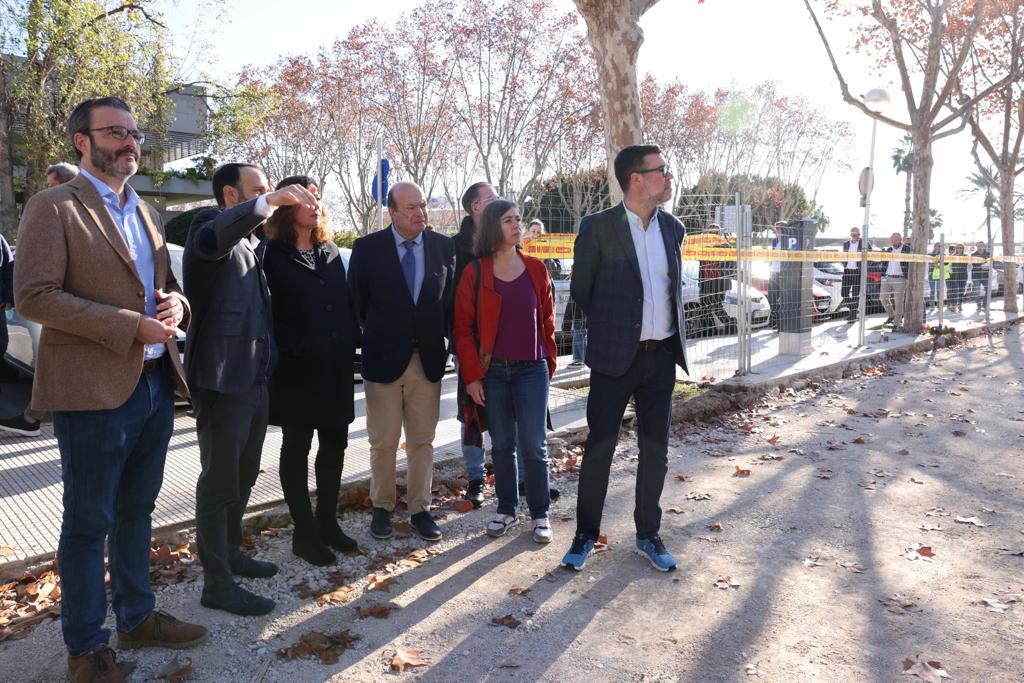
The President of the Government, Francina Armengol, and the Mayor of Palma, José Hila, today visited the remodelling work on Palma’s new promenade, accompanied by the President of the Balearic Islands Port Authority (APB), Jaume Colom, and the head of Planning and Infrastructures of the APB, Antoni Ginard. The latter explained to those present the phases into which the intervention will be divided and different mobility-related issues. Also present were the councillors for Infrastructures and Accessibility, Angélica Pastor, and for the City Model, Decent Housing and Sustainability, Neus Truyol, and the councillor for Culture and Social Welfare, Antoni Noguera. Those present were able to see the four information panels that have been placed in the area, next to the Oceanographic Centre of the Balearic Islands, where a synopsis of the project is given, including aspects such as the space set aside for pedestrians, the incorporation of more trees and flowerbeds, the connections with the adjacent neighbourhoods, the children’s play areas and the widening of the pavements. The scope of the project is 3.5kilometres and 183,670m2 will be remodelled. The budget for completion of the project is around 38 million euros, excluding VAT, and the work is expected to last 20 months. “It is a very exciting, very transforming project, which designs the new Palma that we are building. This space has always been a barrier between the city and the sea, a motorway, which will now become a green promenade where we can stroll along and enjoy our city. It is also the city’s seafront, one of the most important spaces, which will be transformed and will give Palma a more modern image”, explained Hila. The mayor affirmed that “the new seafront promenade is the future of the city, a space where pedestrians will be the protagonists”. During the visit, the president of the Government, Francina Armengol, thanked the Palma City Council and the APB for their work. “In politics we are there to plan for a better future, and it is thanks to this collaboration between Palma City Council and the APB that we have been able to make this commitment to transforming the city a reality. It will also accompanied by another emblematic commitment, the Palma tram, which we will begin now in 2023”. Francina Armengol described the project as “magnificent”, not only from an aesthetic point of view and in terms of prioritising pedestrians and green spaces, but also from an economic perspective. “In this emblematic area of Palma there are all kinds of shops and businesses that will be greatly enhanced”, concluded the chief Executive. The APB’s head of infrastructures, Antoni Ginard, explained the state of the work. The remodelling work consists of three phases, plus an initial preparation phase. During phase 0, which began on 18 November 2022 and is currently underway, the preparations necessary to start the work will be carried out, such as access to fords, removal of some kerbs, signage and placement of barriers, and the provisional relocation of bus stops and traffic lights. A pedestrian promenade The promenade project is defined as “a promenade for pedestrians”. Therefore, the pedestrian area will be increased from 29.5 to 39.7%, and the pavements in the area furthest from the sea, which are now between 2.5 and 5 metres wide, will then be 5 to 10 metres wide. This will guarantee that terraces, green areas, parking, bus stops, containers, etc. can all be used without encroaching on the pedestrian precinct. The resulting proposal is a promenade with two lanes in each direction, 64,300 square metres of asphalt and 35% of surface area for vehicles, as opposed to the current 3-4 lanes in each direction, 107,000 square metres of asphalt and 58.5% of surface area for vehicles. It is important to remember that more than two years ago, one lane of traffic was reduced and the two traffic lanes of the project are now operational. The separate cycle lane is maintained. In this context, the management of public transport also undergoes changes: lines and stops are maintained, improving space and waiting conditions with new bus shelters. The bicycle lane doubles its presence on the promenade (from 2 to 5%), with five new parking points and a length of 3.5km. A green promenade The project, drawn up by the architects Elías Torres and José Antonio Martínez Lapeña, triples the number of trees and doubles the number of palm trees and the surface area of flowerbeds (from 9.7 to 20%). There will be 1,820 new trees, 512 palm trees, 69 transplanted specimens and 20 new species. Accessible furniture, children’s play areas, containers and other services and infrastructures will also be integrated. Monuments, sculptures and sundials along the promenade have also been marked, preserved or relocated. One of the most outstanding works is the restructuring of the road junction in the area of Paraires, which will make room for the urban and landscape integration of the new Club de Mar, on which work is still underway. Meanwhile, in the area of Sa Riera, pedestrian circulation will be prioritised at the junction with Avenida Argentina, with much wider pavements and a new system of accessible ramps. Therefore, in addition to solving one of the black spots on the Maritime Promenade, the continuity with the neighbouring square of Sant Elm will be improved. The same applies to the Plaza de Santo Domingo de la Calzada. The pedestrian area will be jointed together in this space by eliminating the service lane and building a children’s play area. The connection with the neighbourhood of Es Jonquet will also be improved. Parking bays Starting next week, the parking spaces will be gradually removed and 108 parking spaces will be maintained on the seaward side throughout phase 1 of the works (until the end of 2023) and throughout phase 2 (until the end of the first half of 2024). This will enable 92 parking spaces to be maintained, plus 9 parking spaces for loading and unloading and 7 for people with reduced mobility. The APB will be responsible for opening the Golondrinas quay car park to the public, with capacity for 80 vehicles. In addition to all this, two plots of land will be set aside by Cort as temporary park-and-ride lots with a capacity of up to 950 vehicles, if necessary. A first site has been set aside in calle Federico García Lorca with a capacity for some 130 parking spaces. The Palma Town Hall has carried out a series of improvements: the site has been cleared, lighting has been installed, railings have been fixed, the unevenness has been corrected, the land has been prepared and the spaces have been arranged. In addition, a 30,000 square metre site next to CLH will be available. Work is already underway to open it up, including the installation of the water collection network, lighting and paving, among others. The existing trees will be maintained. It is expected to be operational in the first quarter of 2023. This car park will be connected to line 1 of the EMT, which will increase its frequency, and which currently connects the area to the city centre. At the same time, the APB will maintain the parking areas in the middle of the Promenade during the first quarter of the year, while the Ponent deterrent park-and-ride facility is being set up. The parking areas are actually located at Pl. Mediterráneo, Marina Puerto de Mallorca, Aigo Dolça and Auditórium. Once the works on the new Promenade have been completed, four Bicipalma public bicycle dock stations will be installed. Four traffic lanes As for traffic, four lanes (two in each direction) will be maintained along the entire route and practically throughout the entire construction period, as has been the case until now. In addition, specific work is currently being carried out on the existing pavement on the sea side to convert it into a roadway. Information to residents, businesses, hotels, marinas and other stakeholders The APB has launched an information management plan to keep users, neighbours, businessmen and society in general informed about the development of the works and future actions that may affect them through the web portal noupasseigmaritimdepalma.portsdebalears.com. Information on the project, as well as notices of public interest as the works progress, will be published on the digital platform.
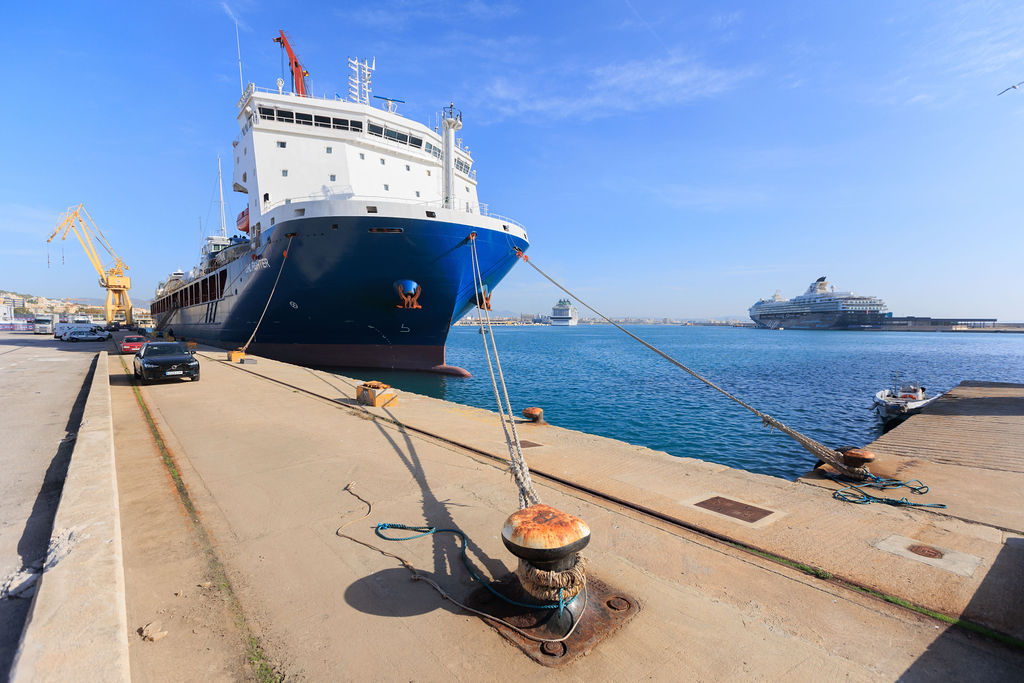
According to thetraffic statisticsof the Port Authority of the Balearic Islands (APB), during the past financial year of 2022, 15,429,553 tonnes of goods passed through the ports of general interest of the Balearic Islands, resulting in an increase in traffic of 12% with respect to 2021. The increase in goods traffic points to a recovery after the health situation and mobility limitations and is applicable to all ports, with 13% in the port of Palma, 16% in the port of Maó, 1% in the port of Alcúdia, 15% in the port of Eivissa and 21% in the port of La Savina. In terms of general goods (consumer goods), almost 14 million tonnes were registered in total in 2022, up 10% on 2021, with 8,641,953 tonnes corresponding to the port of Palma (+10%) 2,963,337 to the port of Eivissa (+13%), 373,165 to the port of La Savina (+21%) and 534,065 to the port of Maó (+16%). An exception is the port of Alcúdia, where there has been a slight decrease of 1% in general goods compared to 2021, from 998,212 tonnes to 986,824 tonnes. As for liquid bulk (basically fuels), the total in the Balearic Islands experienced an increase of 39%, especially in Palma with an increase of 47%, followed by the ports of Eivissa (+31%), Maó (+16%) and Alcúdia (+17%) The increase in the volume of solid bulk cargo (coal, cereals, salt, construction materials, etc.) is overall more timid (7%), and is even negative in Palma (-7%). Eivissa, on the other hand, stands out from the rest with an increase of 60%. The rest of the ports: Maó, +14% and Alcúdia, +7%. 45% more passengers It is undoubtedly in passenger traffic figures that the progressive recovery after the pandemic can be seen. Therefore, if we analyse the number of passengers in the five ports, throughout 2022 there were 8.8 million, 45% more than in 2021, of which 7 million correspond to regular lines (+24%), and 1.7 million to cruises (+401%). By ports, the number of passengers increased mainly in Palma, with 112% more, Maó with 70%, Eivissa with 34%, Alcúdia with 21% and La Savina with 19%. For more information, see our "Statistics" section at www.portsdebalears.com.
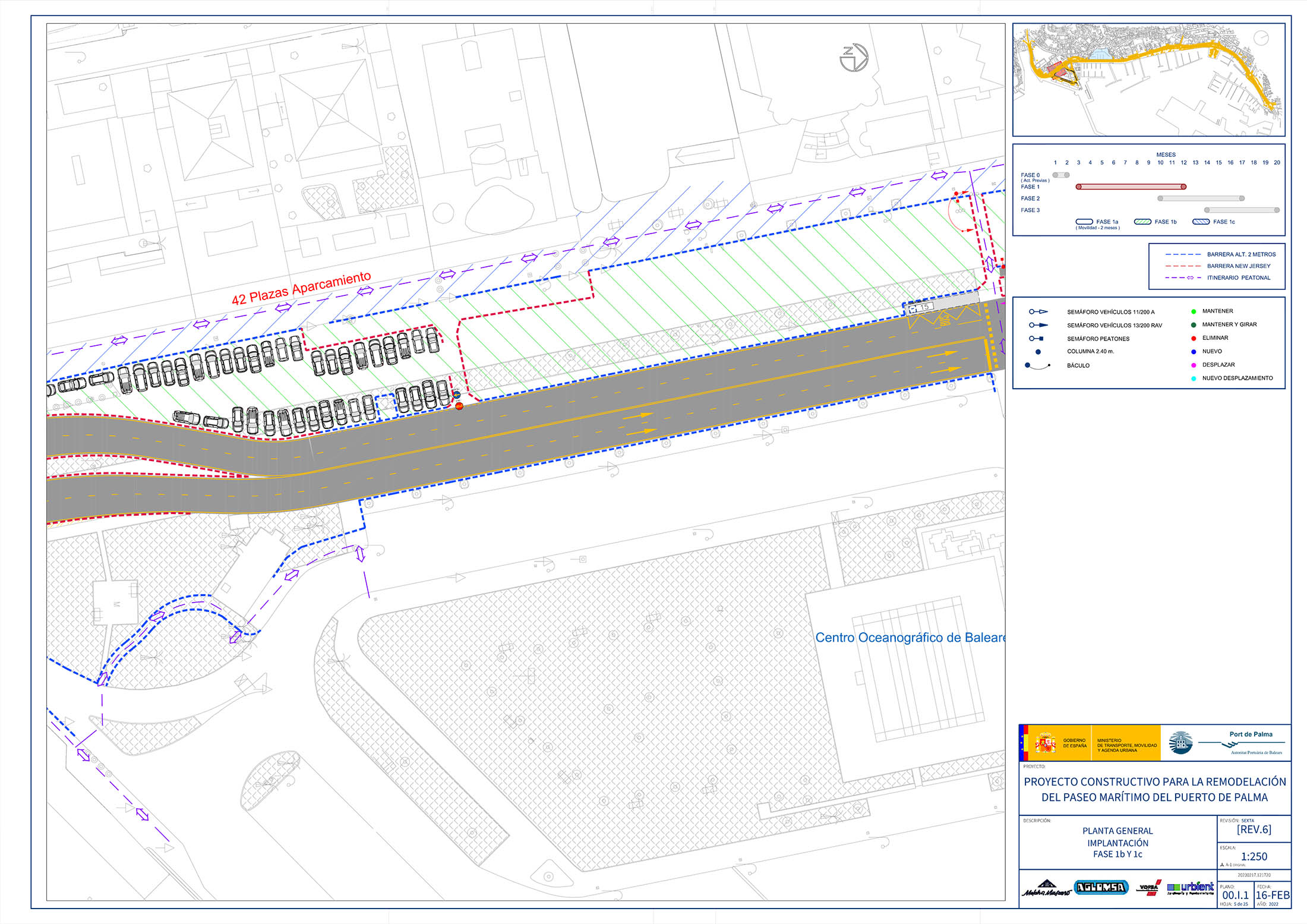
The Port Authority of the Balearic Islands (APB) has responded to the different requests made by the stakeholders of the Palma seafront remodelling works at the last two meetings held on 31 January and 9 February. Therefore, all requests that complied with the necessary safety measures in each case have been incorporated into the remodelling work phases. Consequently, a car park for forty parking spaces in front of the Spanish Institute of Oceanography has already opened, where a new bus stop will also be installed. A new car park has been created in the centre of the parterre in front of the Auditorium and for the time being, in phase I, the parking areas in Plaza Mediterráneo will be maintained. Furthermore, three loading and unloading points will be created on the promenade during phase I, at the Hotel Costa Azul, in front of Can Barbarà and in the Auditorium area. The bus parking area in front of the Golondrinas quay will also increase its capacity during this construction phase, going from herringbone to perpendicular parking. More signs will be installed at strategic points, such as the access to Calle Pedrera, which will also be open to customers frequenting the shops in the area, and parking bans will be enforced at the entrances to the garages and at the roundabout next to the Auditorium. Another of the requests made during the meetings was the increase in the number of waste containers in different areas of the Paseo Marítimo, which has been passed on to Palma City Council to be dealt with by Emaya. All these actions will be reinforced by press releases, radio and television broadcasts, maps available in hotels and shops and announcements in fenced-off areas.
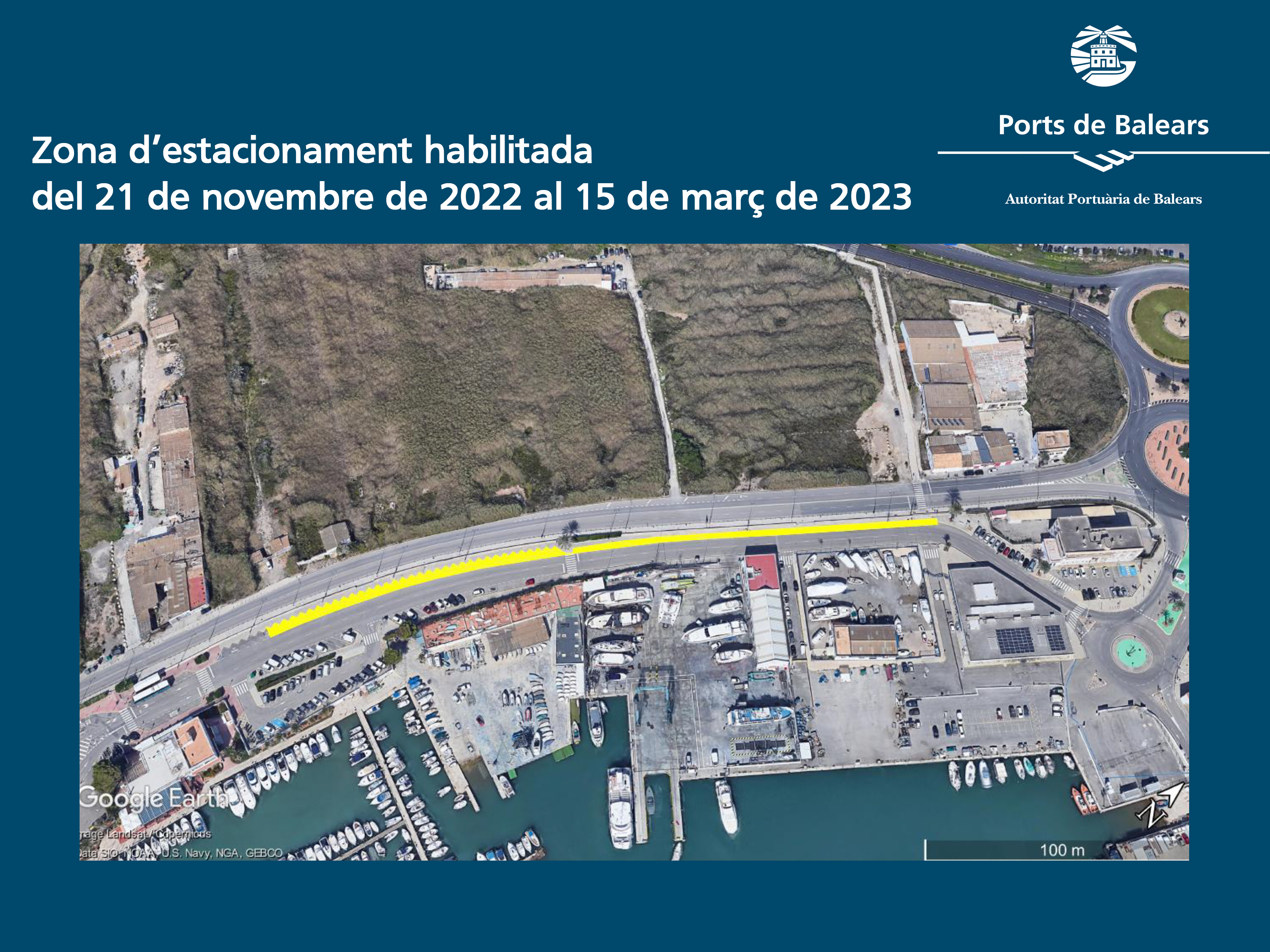
As the low season arrives, the port's operational needs are fewer, so from tomorrow, 22 November, until 15 March, the Port Authority of the Balearic Islands (APB), in collaboration with Eivissa Town Council, will set up an additional parking area on Avda. Santa Eulàlia in Eivissa, next to the Ribera Poniente quay and opposite the Formentera Maritime Station and the Club Náutico Ibiza yacht club. As in previous years, this area that is made available to citizens to solve the problem of finding parking in the city centre during the winter.
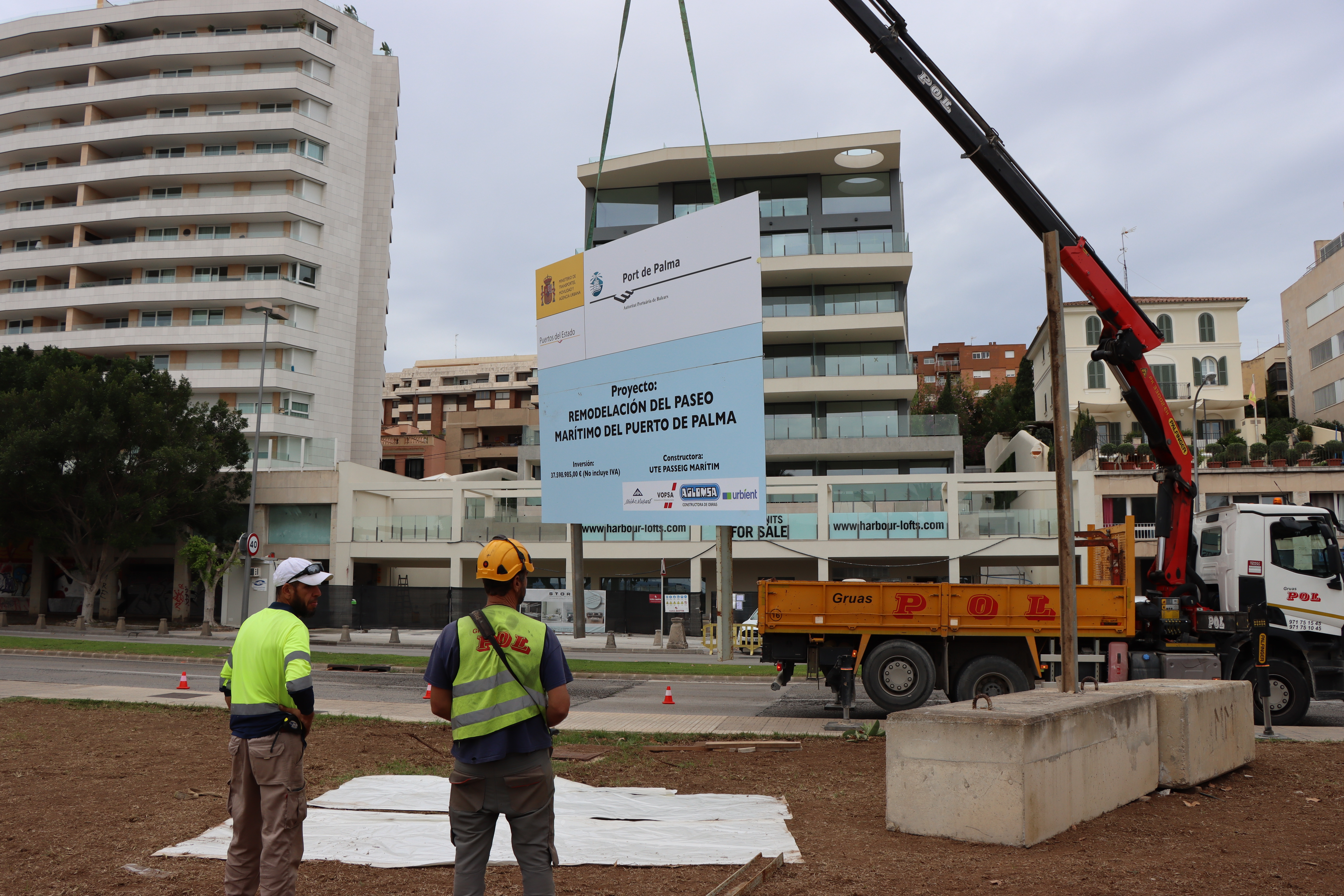
As planned, the works for the remodelling of Palma's promenade began this Friday, 18 November, one month after the signing of the contract with the joint venture between the Mallorcan companies Melchor Mascaró, Vopsa, Urbient and Aglomsa, and the day after the pre-construction review document was signed. Once the planning meetings of the agents involved in the work terminated, the first signs and barriers were installed late in the morning in the Paraires area. The remodelling work will consist of three phases, plus an initial preparation phase. This phase 0, which is the one that started today and will last until the beginning of 2023, will involve the preliminary actions necessary to start the works, such as accesses to fords, removal of some curbs, signalling and installation of barriers and temporary relocation of bus stops and traffic lights. Parking spaces will not be affected until after the Christmas holidays. Palma’s new Seafront Promenade starts with a new image that symbolises a new space in the city near the sea, giving people a better quality of life, fresh vegetation and a more pleasant environment. noupasseigmaritimdepalma.portsdebalears.com The APB has launched an information management plan to keep users, neighbours, businessmen and society in general informed about the development of the works and future actions that may affect them through the web portal noupasseigmaritimdepalma.portsdebalears.com. Information on the project, as well as notices of public interest as the works progress, will be published on the digital platform launched today
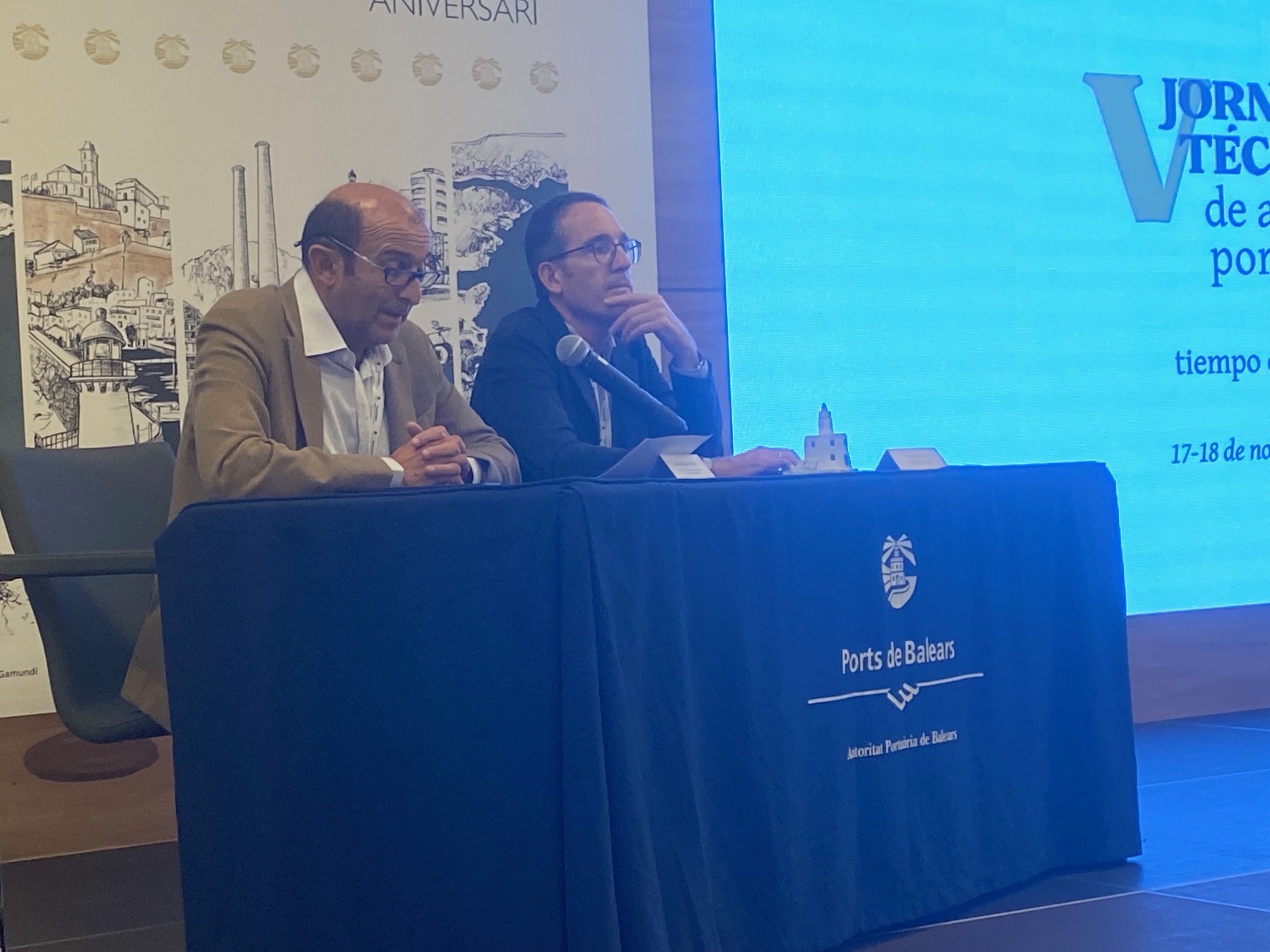
The Port Authority of the Balearic Islands (APB) is hosting the 5th Technical Conference on Port Archives, entitled 'The archive, a time capsule', starting today. For two days, experts in port archiving and researchers will present their points of view on the general characteristics and strategic dimension of the documentary collections of port archives. First of all, the director of the Arxiu del Regne de Mallorca, Ricard Urgell, will review the existing documentation on the port of the city of Palma between the 15th and 18th centuries. Later, the archive of the Port Authority of Huelva will be presented as a research model and the documentary heritage of the MITMA general archive. The conference will include two round tables. The first, this Thursday, will deal with the historical archives of the Spanish port system in the 21st century. The following day will offer a practical vision of electronic administration and archiving through the cases of the port authorities of Ferrol, Cartagena and the Balearic Islands. Other presentations will look at the port documentation housed in the National Historical Archive, the model of cooperation between institutions of the Balearic Islands Historical Archives Platform and artificial intelligence as a mechanism to facilitate the dissemination of documentary archives.
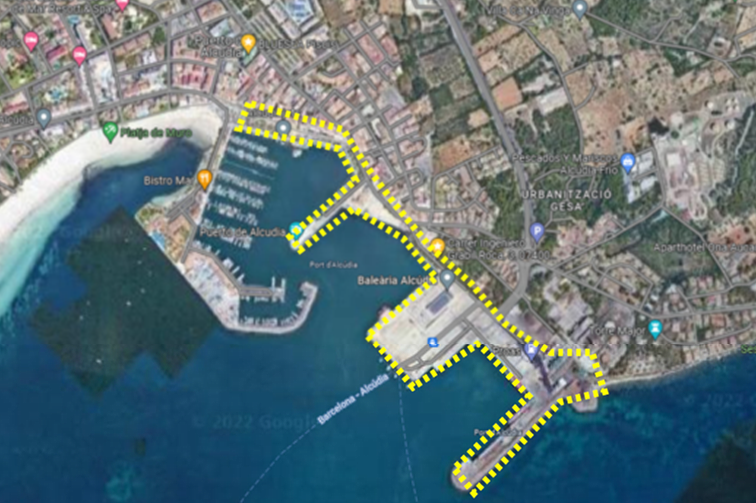
The Port Authority of the Balearic Islands (APB) will improve the lighting installations in the port of Alcúdia in order to reduce energy consumption and its associated cost by half the current consumption. The actions resulting from the analysis of the lighting in the different premises and areas will entail fundamental changes in the equipment and operation of the entire system, aimed at providing all areas of the port with uniform lighting values. The main action, which began this November, consists of the creation of new lighting points and the replacement of most of the lighting of the 739 current points with more efficient LEDs, resulting in an energy saving of 50%. In addition, the management of the lighting point control panels will be renewed and unified, and a remote management and point-to-point control system will be set up for the entire lighting installation in the port area. Work is currently continuing with the construction of new electrical conduits in the areas where new lighting will be installed and the replacement of the necessary supports to standardise their typology, with heights ranging from 3 to 20 metres. Savings of 50% The current energy consumption of the port is estimated at 838,016 kWh/year. With the changes proposed, the new project will reduce this by more than half. The company awarded the contract is ELECNOR, SERVICIOS Y PROYECTOS, S.A., with a budget of €809,043.34, and a completion period of 5 months. This investment is expected to create 20 direct jobs. Different areas coexist in the port, such as those with exclusive access for port activity and public spaces, areas used by light and heavy vehicles or pedestrians, and goods transport sectors. In all of them, the Regulation on Energy Efficiency in Exterior Lighting Installations and the Guide to Energy Management in Ports will be complied with.
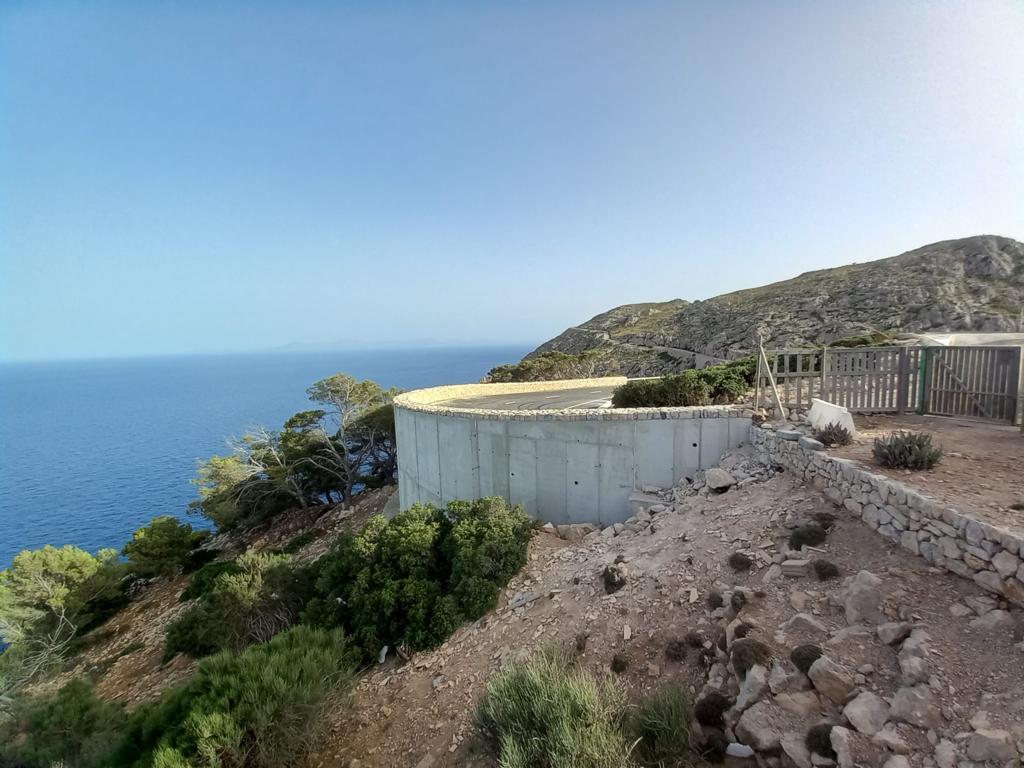
The Port Authority of the Balearic Islands (APB) will resume work on the structural reinforcement of the earth retaining wall on the access road to the Formentor lighthouse on 14 November. From that day onwards, and in coordination with the different administrations, access to the lighthouse will be closed to all traffic and persons not involved in the works, at the car park at the Cape Formentor viewpoint. The works are scheduled to be completed on 23 January 2023. On 22 June 2022, with the reinforcement work partially completed, the road was partially opened for reasons of public interest and the start of the tourist season. Now the lining of the retaining wall will be completed with a dry stone wall to be built before the summer. Notice boards will soon be installed at the roundabout at the Formentor beach car park.
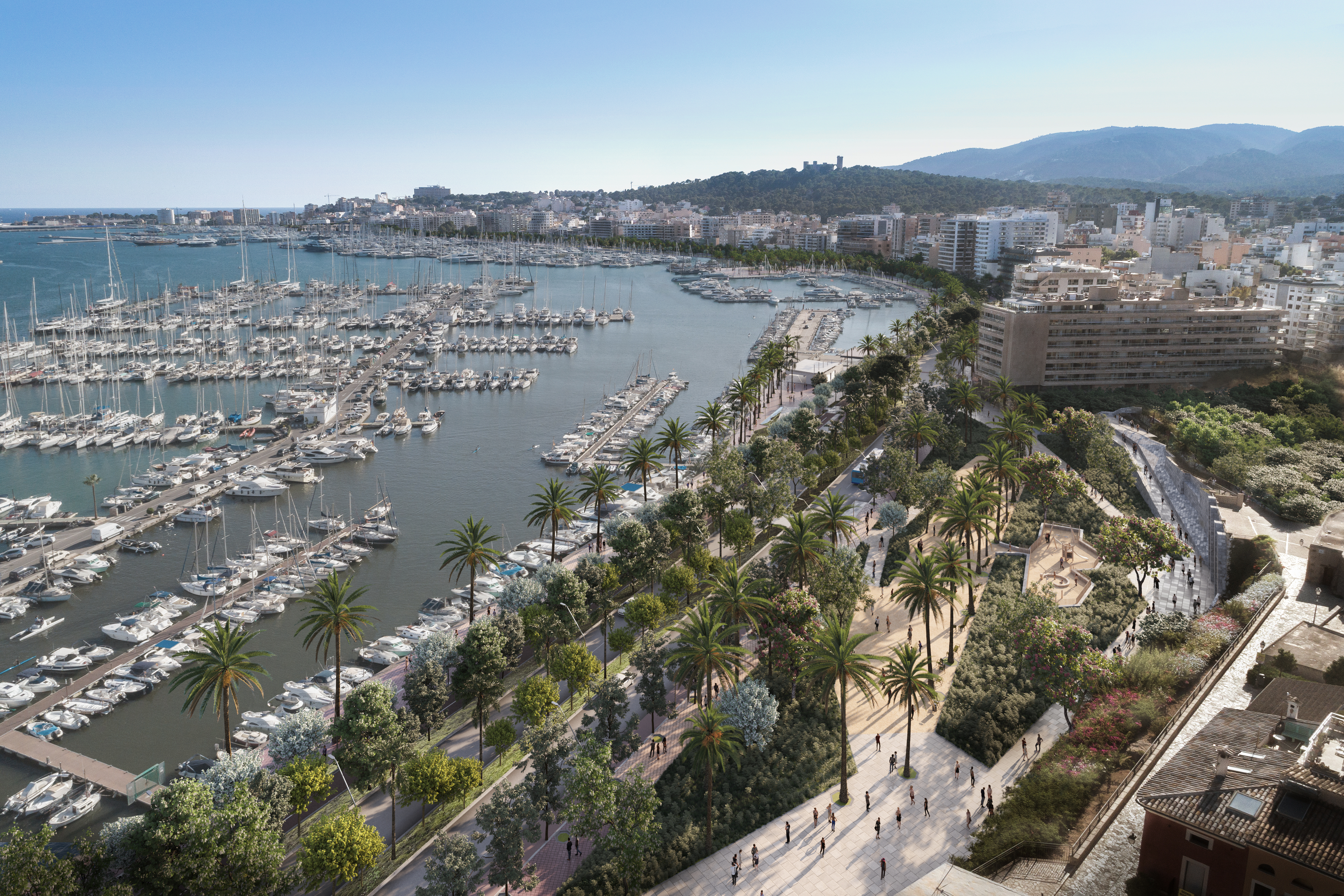
The Port Authority of the Balearic Islands (APB) today informed the stakeholders affected by the remodelling of Palma’s new seafront promenade that work will begin on Friday 18 November. It has also provided details of the construction work and the different phases scheduled during the 20 months that it will last. The aim of this entire project is to achieve a consolidated and safe infrastructure that involves less inconvenience and allows for more efficient and effective performance of the works. These will begin one month after the signing of the contract with the joint venture between the Mallorcan companies Melchor Mascaró, Vopsa, Urbient and Aglomsa, and the day after the signing of the document verifying readiness for construction, which indicates when the work on the project begins. The remodelling work will consist of three phases, plus an initial preparation phase. Phase 0, which will last until the beginning of 2023, will involve the preliminary actions necessary to start the works, such as access to fords, removal of some kerbs, signposting and placement of barriers. Parking spaces will not be affected until after the Christmas holidays. Four traffic lanes With regard to traffic, four lanes (two in each direction) will be maintained along the entire route and throughout the works, and before starting, specific remodelling of the current pavement on the sea side must be carried out to convert it into a carriageway. Therefore, the first phase will be on the land side, without initially affecting the terraces of any businesses. It will entail widening the pavement in order to maintain the pedestrian route and accessibility to the premises. The next phase will be on the sea side, so the traffic lanes will be moved to the already remodelled section of the land area. Continuous communication Stakeholders, who met today at the APB’s institutional headquarters, were also informed of the implementation of an information management plan to keep users, residents, businessmen and society in general informed of the development of the works and future actions that may affect them. These will include the creation of a microsite or digital platform where information on the project will be published, as well as notices of public interest as the works progress. Meetings will also be held with stakeholders and the public will be informed through social networks, the media and other forms of communication.
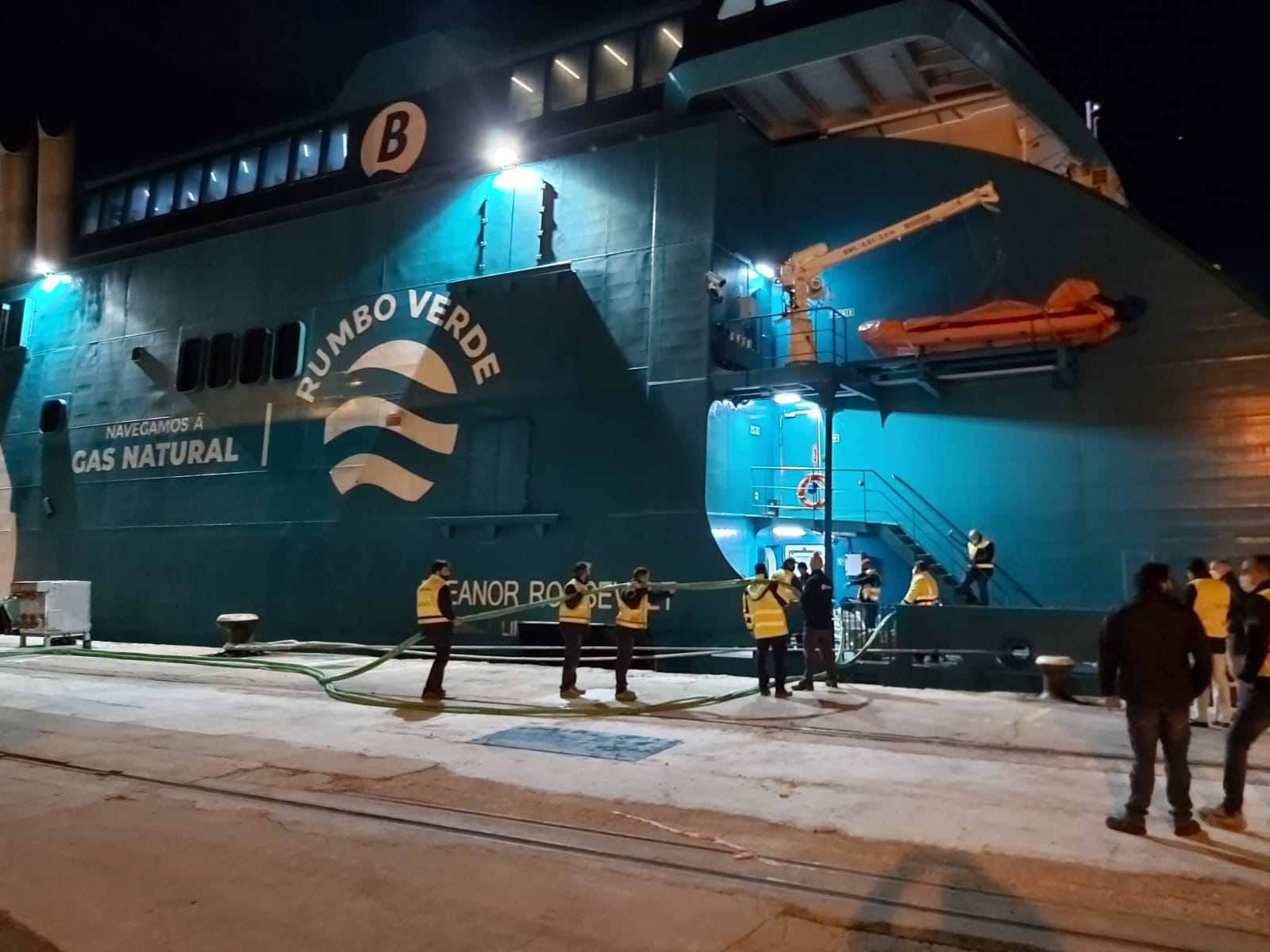
The Ministry of Transport, Mobility and Urban Agenda has provisionally approved the subsidy for the Programme to Support Sustainable and Digital Transport on a competitive basis, financed by the European Union - NextGenerationEU, awarded to the port authorities of the Balearic Islands and Barcelona for the implementation of electric land connection systems for ships. This technique, known as cold ironing, is an alternative for ships to turn off their engines and consequently eliminate the noise and their polluting impact while they are moored in port. The commissioning of these facilities in the Balearic Islands is planned for the second half of 2024 and will involve an investment of 12.3 million euros, 40% of which will be financed by the European Union. It will be specifically implemented in the ports of Palma (Paraires and Commercial docks), Alcúdia (Ponent docks), Eivissa (Botafoc docks) and Maó (Cós Nou). The first cold ironing system was installed by the APB at the Paraires quay in the port of Palma, and is prepared to connect to the electricity grid, although not simultaneously, a ferry-type vessel with a maximum power demand of 1,600 kW (medium voltage) and another fast ferry-type vessel with a demand of 800 kW (low voltage). For the on-shore electrical connection, the system has 275 metres of medium voltage underground lines, a transformation centre and a frequency elevating substation in the service area of the port of Palma. Support for institutions In this respect, the support of the local institutions has been unanimous: town councils, island councils and the Government of the Balearic Islands have signed a letter of endorsement that accompanies the initiative, with the conviction that climate neutrality and the will of the ports of general interest of the Balearic Islands to be as respectful as possible of the environment is a common objective. When in port, ships use their auxiliary engines to produce electricity during loading, unloading and mooring operations. Although the amount of emissions produced during the mooring phase is less than during the maritime traffic phase itself, in this case the pollutants emitted directly affect the air quality of the population centres near the port, as well as the port itself. The use of electrical energy from the national grid means a reduction in the emissions produced by the ship, as the emission factor per MWh of the grid’s generators is much lower than that of the ship's auxiliary engines.

The rise in sea level as a result of climate change may leave some port infrastructures inoperative, such as docks and piers, as well as affect the stability of some docks due to the impact of more frequent storms that cause larger waves. These are some of the conclusions of a study prepared by the Universitat Politècnica de Catalunya (UPC) and commissioned by the Port Authority of the Balearic Islands (APB), which presents a plan for adaptation to climate change for ports of general interest in the Balearic Islands, as well as a proposal for measures and adaptation paths to prevent possible risks. Antoni Ginard, head of Planning and Infrastructures of the APB has stressed the willingness of the public body to adapt infrastructures while working to mitigate climate change: 'We must adapt in time to ensure that the ports can continue to fulfil their primary mission, which is the supply of goods and passenger transport'. UPC professors Agustín Sánchez-Arcilla and Joan Pau Sierra presented the adaptation plan for the five ports of general interest in the Balearic Islands and the marinas of Portitxol and es Molinar, in Palma. Two climate scenarios have been considered in the study, one moderate and the other pessimistic. The first assumes that people will increase their awareness of the effects of climate change and active international policies will be adopted in order to reduce emissions. This is the most plausible scenario if some international agreements, such as the Paris Agreement (2015), are implemented. The worst-case scenario may occur if some of the major emitting countries do not adopt aggressive climate change mitigation policies or if actions that accelerate climate change continue. At the same time, these scenarios have been compared with two time variables, one in the short-medium term (2026-2045) and the other in the long term (2081-2100). Conclusions In this context, in the second period up to 2100, it is clear that the problems of inoperability of quays and jetties will increase, as the rise in sea level will be between 50 centimetres and 1 metre, depending on the scenario at that time. It will therefore be necessary to raise the level of some quays, replace fixed jetties with floating ones and increase the frequency of dredging in ports. The docks for pleasure boats will be the most affected in this case, especially the Portitxol (Palma) dock, where the entire breakwater will have to be modified. The rise in sea level, together with the increase in the magnitude of the waves, could also cause damage to the dikes, either displacing the breakwater blocks or compromising the stability of some of them. To do this, different solutions are proposed depending on the type of breakwater, such as the construction of breakwaters, reinforcement of the banks or changing the type and weight of the breakwater blocks. Together with the study of the degree of exposure and level of vulnerability of the ports and the proposal for action in the port infrastructures, a Risk Atlas and a Climate Alert plan have been drawn up for each of the ports studied. Climate adaptation pathways have also been developed, determining the points of no return so that the APB can take decisions that are ahead of the impacts of climate change and ensure that the port infrastructures can continue to be fully operational at all times.




